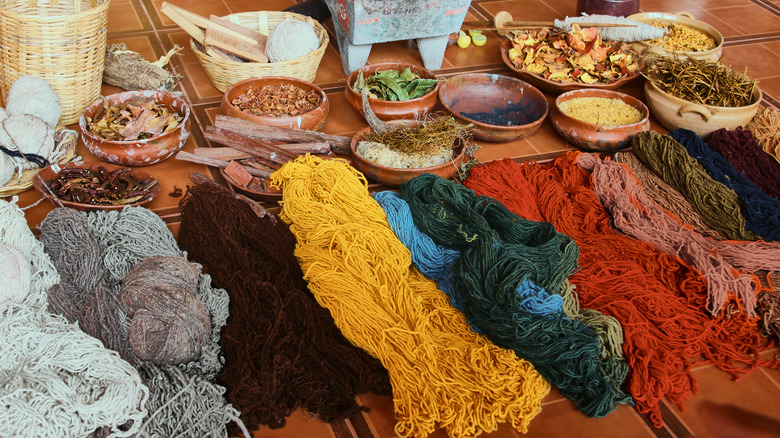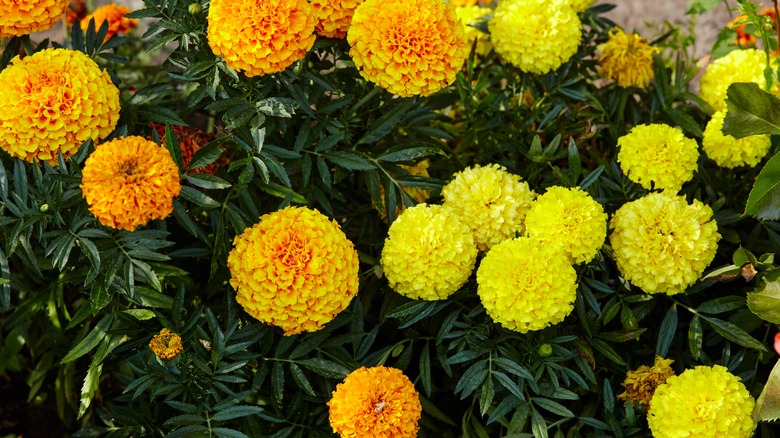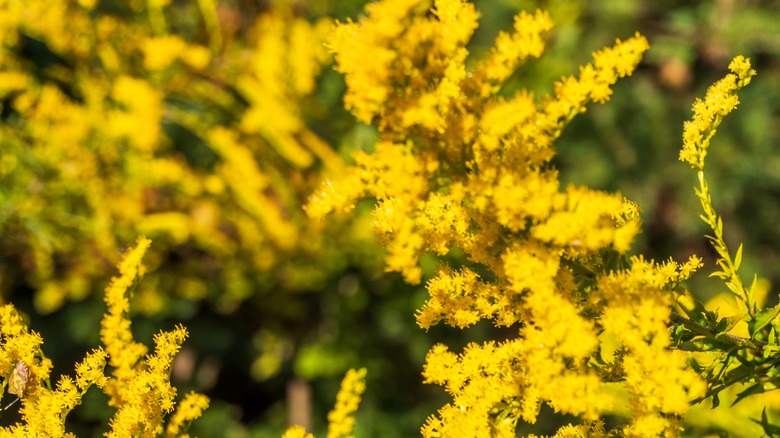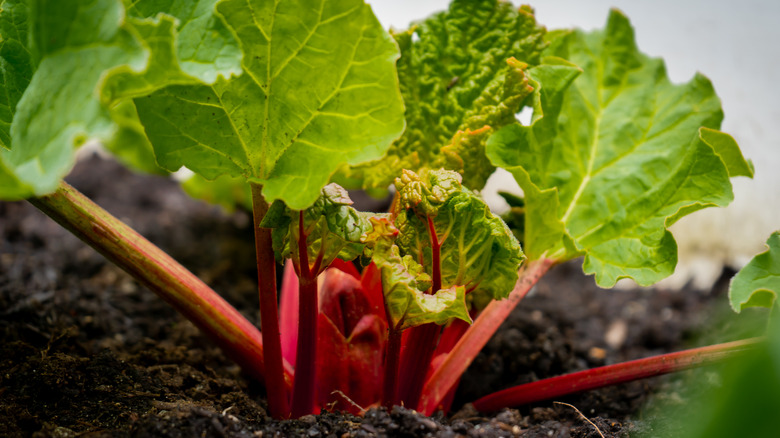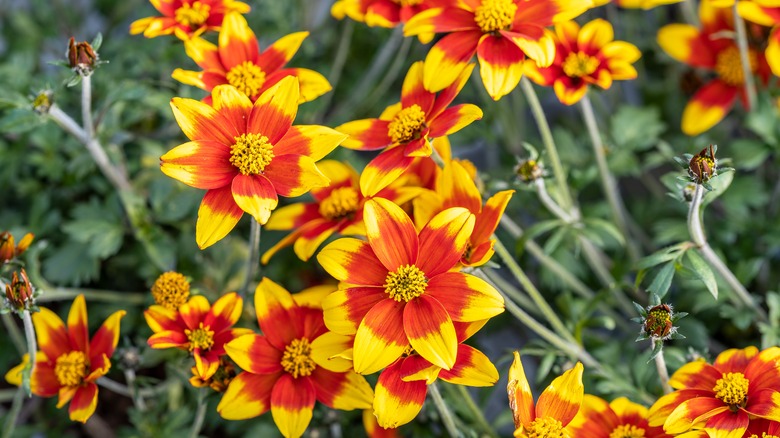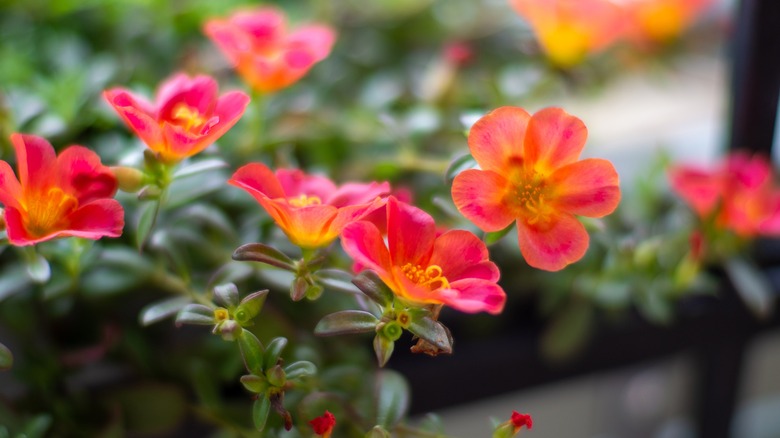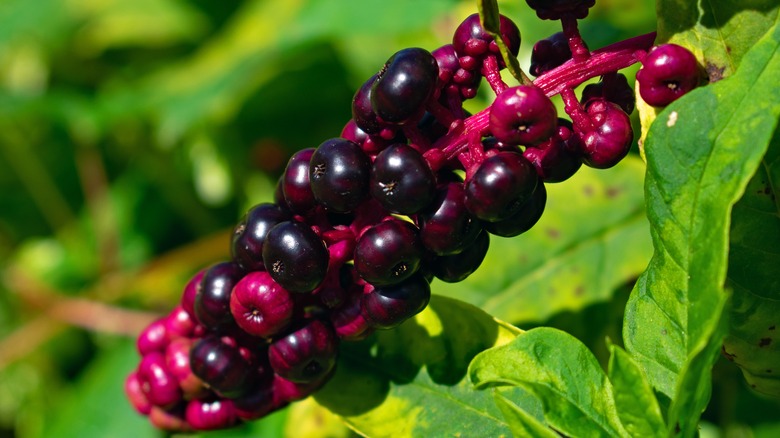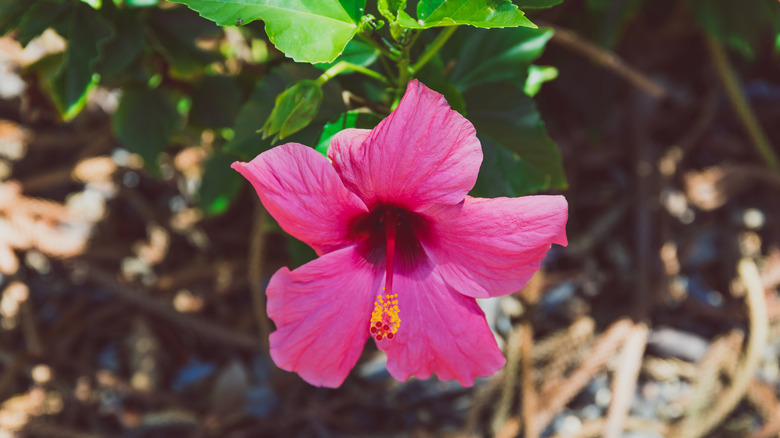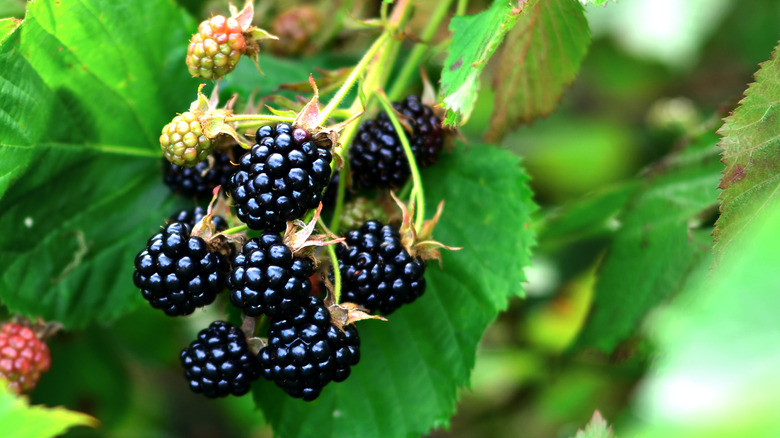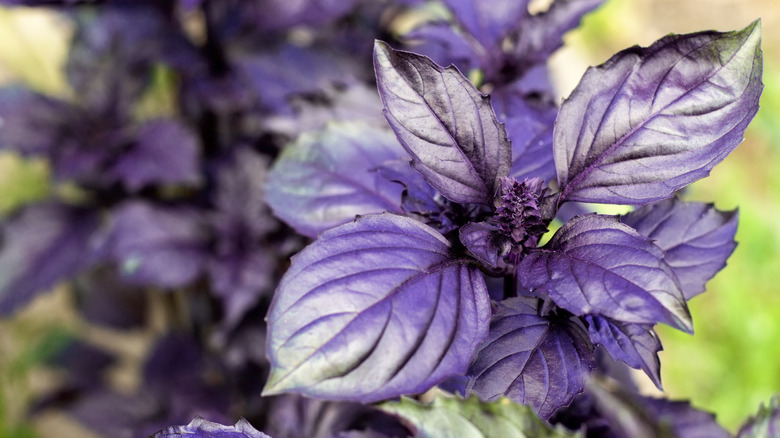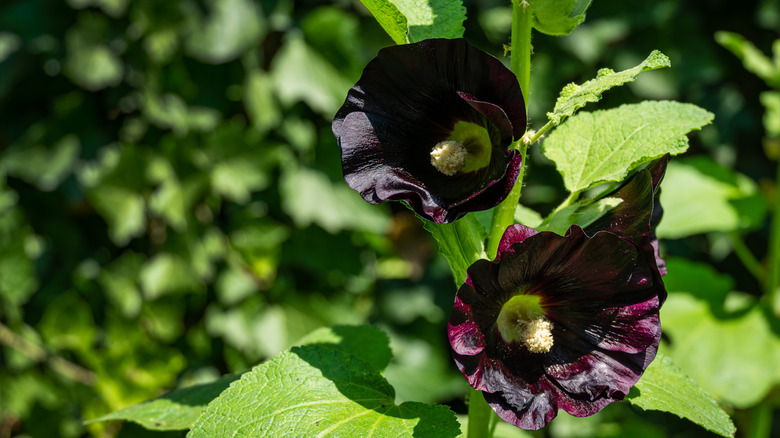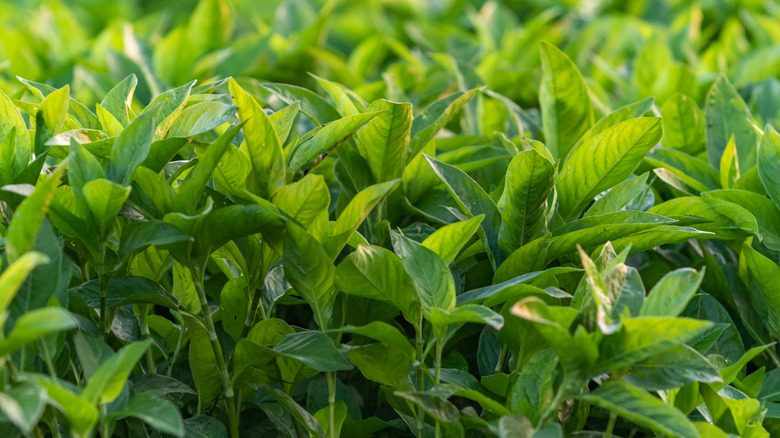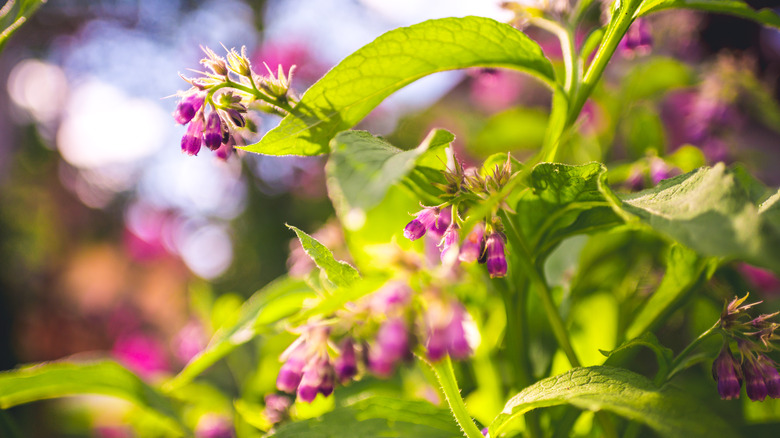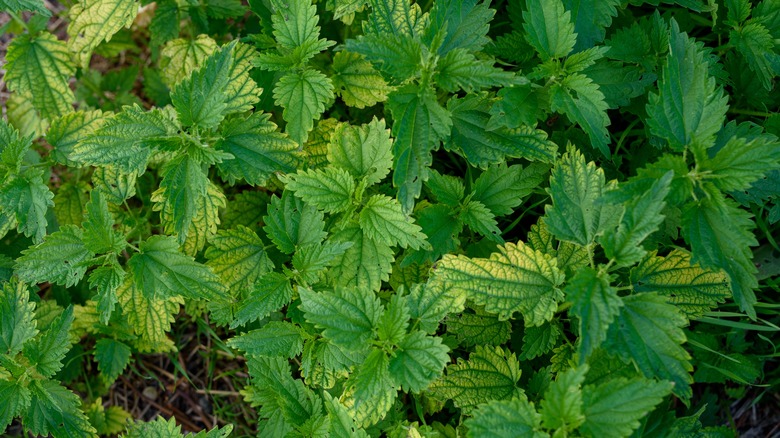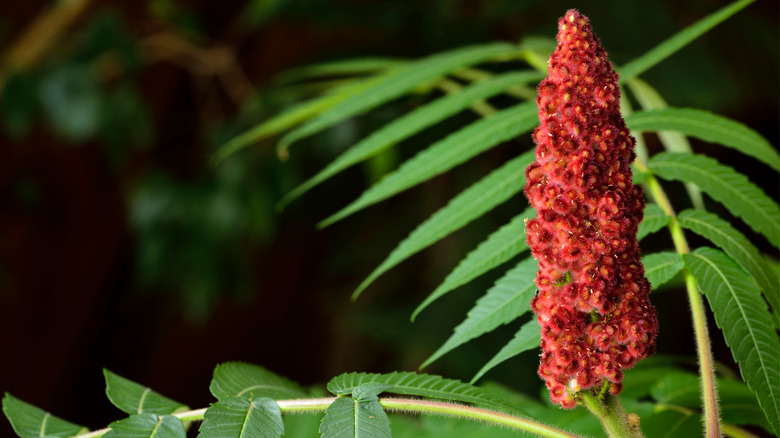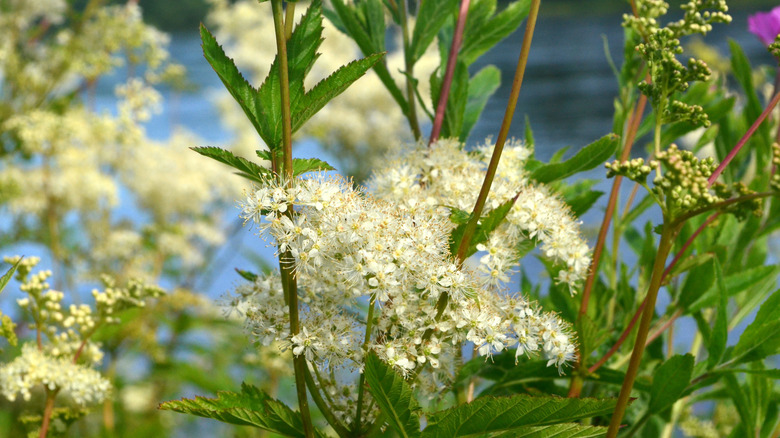15 Plants You Can Put In Your Garden For Natural Dyes
Natural dyes have been used since the time of the ancient Chinese over four thousand years ago. So if you want to make your own non-toxic dyes to color clothing and fabrics, you're in good company. However, you'll need to grow the right plants in your garden to do so. You'll find 15 such species below, which you can typically simmer and strain to create dye water.
But the plants are only part of the equation. You'll also need to choose the right fabric, which comes in three main categories: cellulose/plant fibers like cotton and linen, protein/animal fibers like wool and silk, or a mixture of both. Keep in mind that synthetic fibers like nylon and polyester can't be colored with natural dyes. You should also consider how you will mordant your fabric, which is a process that prepares the material to get the brightest and most long-lasting color. Unless you're using indigo, this process is always a necessary step you should complete. For example, aluminum sulfate is an excellent mordant material for protein fibers, while aluminum triformate can be used on any category of natural fabric.
1. Marigold
If you want to achieve a bold yellow dye, try growing marigolds. On protein fibers, the resulting dye will create a bright yellow, while cellulose fibers will come out with a lighter shade. To create dye water with this flower, simmer the blooms for up to an hour, then strain.
2. Goldenrod
Another plant that will provide you with yellow dye is goldenrod. You'll need to use fresh flowers to get the brightest pigment, and picking them right before they open is best. Simmering the water for an hour will produce a bold tone on protein fibers.
3. Rhubarb root
After you pick your rhubarb, save some of the roots to create orange dye water. Wash and cut them up into small pieces immediately after harvest, and they can be used either fresh or dried. To dye with them, simmer the roots for 30 minutes, then strain and leave the fibers to soak overnight.
4. Tickseed sunflower
To dye fabrics with these bright tickseed sunflower blooms, bring them to a boil, then steep them overnight. The next day, after straining, place your fibers inside. This plant will produce anywhere from an orange-yellow to a deep red-orange tone.
5. Portulaca
This bright flower can create different shades of pink and red. To use the blooms of the portulaca plant, you'll want to dry and crush them with vinegar and salt mordant, then boil them.
6. Pokeberry
Instead of using a typical mordant when dyeing with pokeberries, you can actually soak your fibers in vinegar water overnight. Then, simmer the crushed berries in vinegar water for a few hours before adding your fibers and letting them sit overnight to produce a fuschia pink or deep red pigment.
7. Hibiscus flower
Hibiscus flowers, whether fresh or dried, can be used to create a reddish-purple dye. To do this, place the tropical blooms in boiling water.
8. Blackberry bush
Planting a blackberry bush in your garden will not only provide you with delicious fruit but will also give you the perfect plant for dyeing fibers. Simmering these berries will produce a faded blue-lavender or purple-gray color in your dye water.
9. Purple basil
While purple basil is a beautiful violet shade, it won't provide you with a purple tone. Instead, boiling these leaves will give your fibers a green-blue or gray-blue shade, which may fade over time.
10. Black hollyhock
Black Hollyhock can be used either fresh or dried to create a blue pigment; however, keep in mind that it may fade to gray over time. To create the dye water, soak the blossoms overnight, then simmer and strain.
11. Japanese indigo
For a bright turquoise color, you can use leaves from a Japanese indigo plant, but the process of creating the dye water is quite unique. You'll need to blend the leaves with ice water to create a thick substance, which you should strain before adding your fibers.
12. Comfrey
For an olive green color, simmer comfrey leaves for 30 minutes, then strain and place the wet fabric inside the mixture for the same amount of time.
13. Nettle
Picking both the stems and leaves of nettle plants and letting them sit and simmer for a long time will produce a light yellow to beige tone. However, you'll need to supplement the mixture with iron to achieve a green color.
14. Staghorn sumac
The subtropical plant staghorn sumac can produce either a brown to tan tone from its leaves or a light red color from its berries. To do so, just boil the elements.
15. Meadowsweet root
The color you get out of meadowsweet root depends upon what you mordant with, as you could end up with either beige, dark brown, or greenish brown. To use this plant to make a dye, soak chopped-up pieces of the leaves, stems, and flowers, then simmer for an hour.
